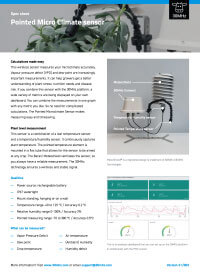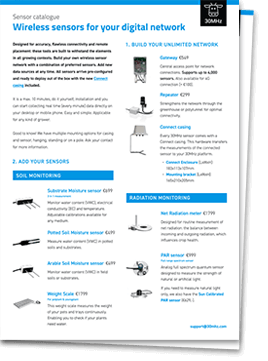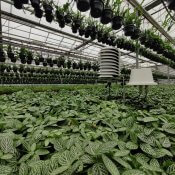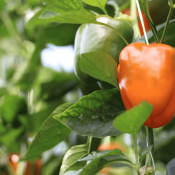We’re not done being excited about VPD
Can there be such a thing as a “hot new metric?” We’ve been hearing (and reading) innovative growers talking about the relevance of vapour pressure deficit (VPD) for a while now. We’re seeing the difference monitoring VPD has made to our customers’ crop performance, and we’re always glad to see the word spreading. Earlier this week, an article in HortiDaily provided a nice breakdown of why this metric is so useful in crop management.
As the article points out, VPD “is used by growers to assess how dry the air is at a given moment. If the air is too dry, photosynthesis will stop in order to protect the plant from exhaustion.” If there is insufficient moisture in the air, there is a risk of crops halting photosynthesis during key hours of daylight. In other words, VPD enables growers to make the most of sunlight for plant productivity.

Growers and researchers alike are excited about VPD. But what is it?
According to Michigan State University’s Heidi Wolleager and Erik Runkle, “vapor pressure deficit is the difference between the amount of moisture in the air and how much moisture the air could potentially hold when it’s saturated.” Put simply in Maximum Yield, “VPD combines the effects of both humidity and temperature into one value; it’s basically a measure of the drying capacity of the air, which in turn drives transpiration, an essential plant process.”
VPD is a key metric for maintaining optimal plant biomass and yield, and the right VPD is central to preventing mold and disease, avoiding poor nutrient uptake— particularly of calcium. VPD measurements help growers calculate crops’ water requirements, and according to Maximum Yield, can help prevent “negative effects on plant growth including reduced photosynthesis, reduced fresh weight yields, plant stunting and physiological problems such as leaf curl or burn.”
According to Michigan State research, VPD is a more useful metric than relative humidity. Wolleager and Runkle emphasize that because VPD is independent of temperature “when measuring plant transpiration and water loss, it provides greater insights than temperature and relative humidity on their own.” Read more of their findings here.
Pointed Micro Climate sensor

This sensor uses leaf temperature and temperature humidity measurements to continuously capture microclimate at close range. Use data from the sensor to better determine heating needs, cutting unnecessary energy expenditures and lowering the risk of plant fungus and disease.
A lot of our customers use this sensor for measuring VPD and dew point.
Capturing VPD (and other metrics) with 30MHz technology
30MHz tech has always been designed with growers’ needs at the forefront. Developed with input from growers, the pointed microclimate sensor can capture plant temperature of individual crops, ambient temperature and relative humidity (RH). With the power of the cloud, though, we can anticipate “hot new metrics” like VPD based around these measurements.
The ZENSIE platform is designed to make the most of customers’ agridata. With the data captured by the pointed microclimate sensor, calculations in the cloud can provide insights on dew point, vapour pressure deficit (VPD), absolute humidity (AH), humidity deficit and the absolute difference between air temperature and dewpoint.
And we’re adding new calculations, based on customer needs– that’s the power of a cloud platform.
 30MHz Sensor Catalogue
30MHz Sensor Catalogue
Designed for accuracy, flawless connectivity and remote placement, these tools are built to withstand the elements in all growing contexts. Build your digital infrastructure with a combination of sensors that suit your needs, and add new data sources at any time.


30MHz is typing… Our extended support team is ready to chat!
At 30MHz we think it’s important that our users can use our platform in an optimal way. At times you may have questions and you would like some help from our support team. Email and our support page filled with helpful articles were your go to’s. But we thought it was time for something extra… ...Read more
New 30MHz connect casing: How we protect your tech
To make sure your dataflow is fully protected, 30MHz introduces a new connect casing: waterproof, dust proof and even resistant to hits. This special shield will last longer and ensure a reliable dataflow from the connected sensor. What does that full protection mean? That’s what we will explain in this article. Watertight: resistant to wetness ...Read more
Smart assistant at work
After the launch of the smart (AI) assistant at GreenTech, the first growers have started using this new feature. The assistant helps them gain insights from their data faster and supports daily decision-making in the greenhouse. Growers report that they use the assistant for: Calculating differences in water content throughout the day Quickly identifying trends ...Read more


